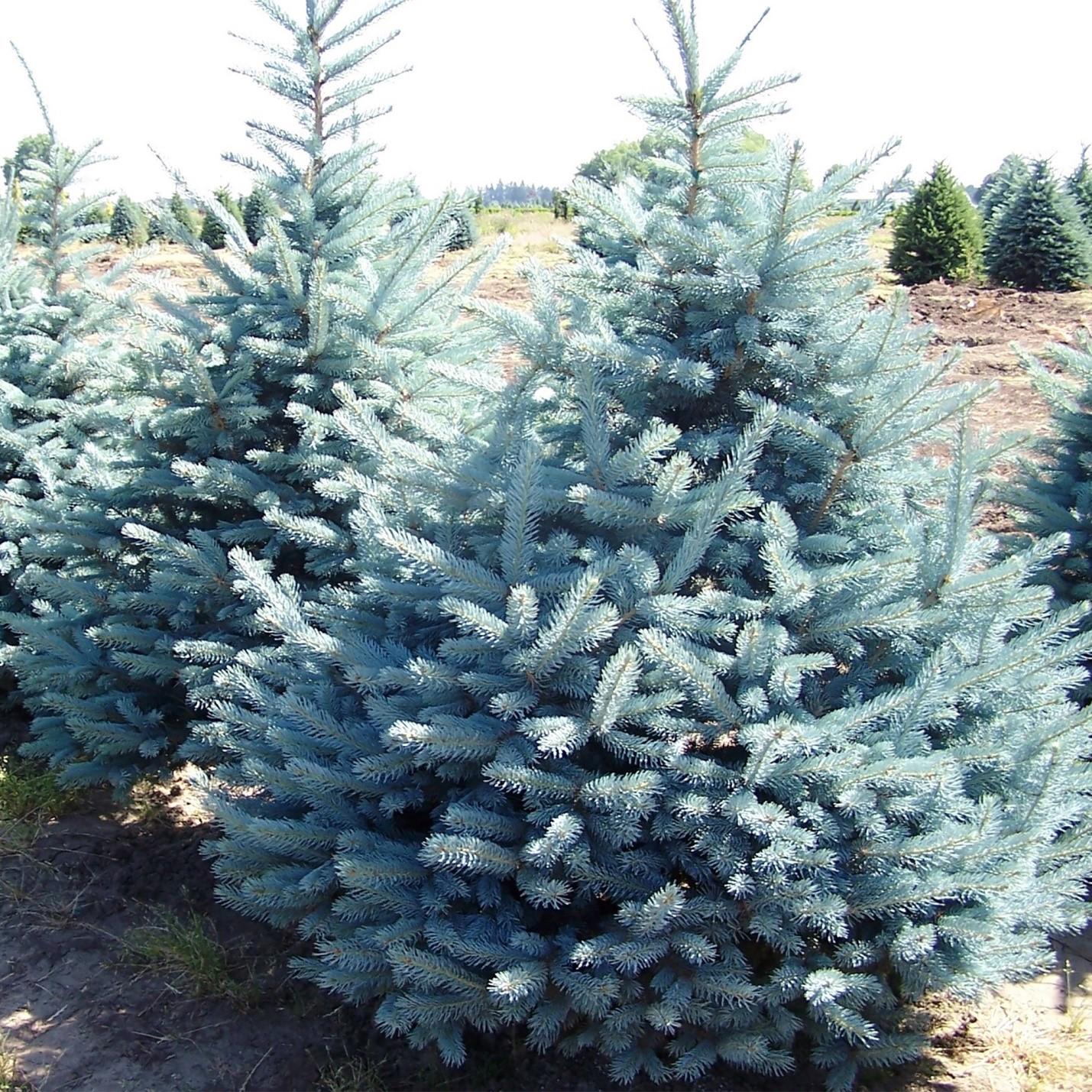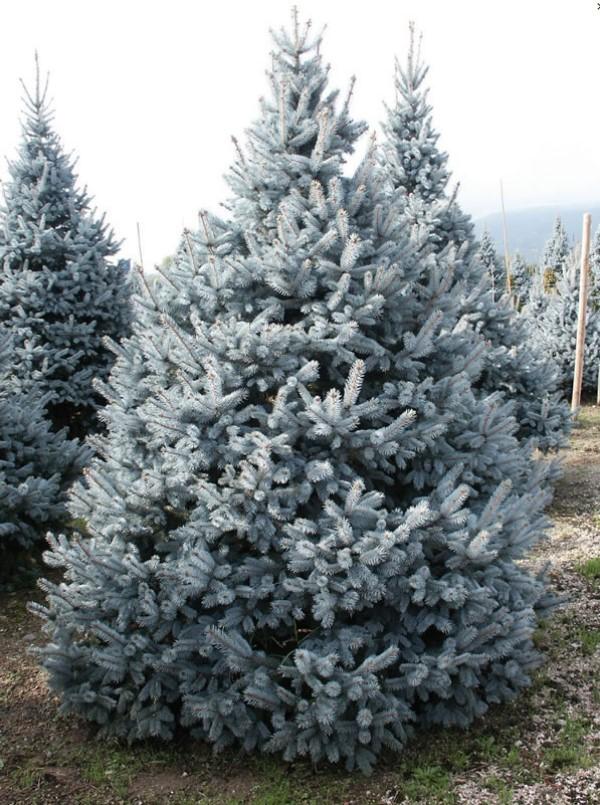Content
Misty blue spruce is in many ways similar to other blue conifers. It has a characteristic bluish color, a slender crown and good immunity. The culture has been awarded several awards; it is actively grown to decorate landscape areas.
History of origin
Spruce belongs to the Glauka group, which includes many varieties. They all descend from a common ancestor that inhabited the vast expanses of North and Central America for many centuries. Misty Blue was obtained from a common prickly spruce, which was also selected in the nursery. By crossing two plants, the blue spruce Misty blue (Glauca Misty blue) was developed.
Description of prickly spruce Misty blue
The tree attracts interest with its unique bluish needles. It is very soft to the touch and is symmetrically located along the trunk. This gives the crown a pleasant decorative look.

The shape of the Misty Blue spruce resembles a pyramid
The name of the variety is translated into Russian as “Mystically blue”. This fully reflects its peculiarity. As they grow older, the blue tint changes to silver.The branches have a strong woody base.
Height of Misty Blue spruce
Depending on the climate, the height can be from 15 to 35 m. The crown width is approximately the same - 4.5 m.
Frost resistance
Misty blue spruce grows in North America, and therefore is quite adapted to cold weather. The tree survives frosts down to -42 degrees. This makes it suitable for planting in Russian conditions. Shelter is only required in the coldest regions.
Advantages and disadvantages
As can be seen from the description, the prickly spruce Misty blue (Glauca Misty blue) is unpretentious. It grows on different soils and does not require constant fertilizing.

Prickly spruce can grow well in the shade
Pros:
- universal purpose;
- highly decorative;
- frost resistance;
- strong immunity;
- possibility of landing in Russia.
Minuses:
- in unsuitable conditions, development slows down.
Planting Misty Blue spruce
Planting is done in mid to late spring. By that time, the weather should stabilize - young seedlings may suffer due to temperature changes. Work is also carried out in the fall, before frost arrives.

Misty Blue spruce grows best on loams, but planting in sandy loam soils with a slightly acidic or acidic reaction is allowed
A distance of 3.5 m is maintained between seedlings. The planting site is prepared as follows: dig a hole and place a layer of crushed stone and peat in it. It is good if the drainage layer is more than 15 cm. In the future, the tree will not suffer from oversaturation with moisture.
Not only peat, but also turf is suitable as a fertilizer. Since prickly spruce is usually sold as seedlings, the earthen lump in the roots is not removed.The procedure may be painful. Misty Blue should be removed carefully so as not to injure the roots.
The seedling is buried, compacting the soil around the trunk. After planting, it will not have enough liquid, so water it immediately. It should be plentiful. To reduce the frequency of wetting, the tree trunk circle is mulched with peat, sawdust, and dry leaves.
Caring for Misty Blue spruce
The process of caring for Misty Blue is characteristic of all prickly spruce trees. For the first few years, water once a week using settled water. Up to 10-14 liters are spent on an adult tree, depending on the upcoming weather forecast. In hot weather, for example, they irrigate regularly and often.
The needles are not burned by the sun even after watering. However, the procedure is carried out in the morning or evening. You can use either a watering can or a hose.
Periodically, Misty Blue is fed with mineral and organic mixtures. They are used alternately. Experienced gardeners advise moistening the roots after applying fertilizers. This way, the substances are absorbed faster than with “dry” application. In addition, nutrients will penetrate to all roots.
The importance of sanitary pruning must always be remembered. It is held at the end of October and mid-March. During the pruning process, diseased and deformed branches are removed.

Frozen needles are carefully cut off
Diseased shoots must be burned after cutting. However, the prickly spruce Misty Blue is rarely susceptible to diseases and only in case of agrotechnical neglect.The sections are covered with crushed coal, garden pitch or other disinfectant mixture.
The speed of development of a young seedling is affected by weeding. Work with weeds regularly, preferably immediately after watering. This is done by hand or with a garden tool.
While the Misty Blue spruce is young, its health is at risk. For the first five years, the tree trunk area is covered with non-woven material that can protect the plant from frost. You can use spruce branches or twine to tie the trunk.
Reproduction
Misty Blue spruce is propagated by cuttings, seeds, and grafting. Of course, it is much easier to buy a ready-made seedling in a store. But if you want to grow a crop yourself, you can do it through seeds. The process is easier than grafting and cuttings - these methods are best used by experienced gardeners.
Diseases and pests
Conifers rarely get sick and are attacked by insects. But with incorrect agricultural practices, even they can become a target for attack. When symptoms of a fungal infection appear, fungicides are used. Experts recommend treating neighboring plantings as well, since the fungus multiplies quickly.

Humidification is completely stopped
Pests that plague the Misty Blue spruce include aphids, spruce scale insects, thrips, and mites. Insects feed on sap; as a result of their bites, individual areas become deformed and eventually die. To combat, biological or folk drugs are used.
Prickly spruce Misty blue in landscape design

The plant is grown in parks, country houses, gardens
It goes well with flowers and other conifers.If the cottage is located on a hill, Misty Blue spruce can be planted close to each other so that the trees protect the area from the wind.

Large stones can be placed around the spruce

Conifers will help you decorate the entrance to the building beautifully

Various trees can be used as a living fence
Conclusion
Misty blue prickly spruce will decorate any area. It can be called a godsend for a gardener. The culture has a symmetrical crown with blue or silver needles. The next advantages are: unpretentiousness, frost resistance, the ability to grow in different soils and climates.
Reviews of prickly spruce Misty blue








